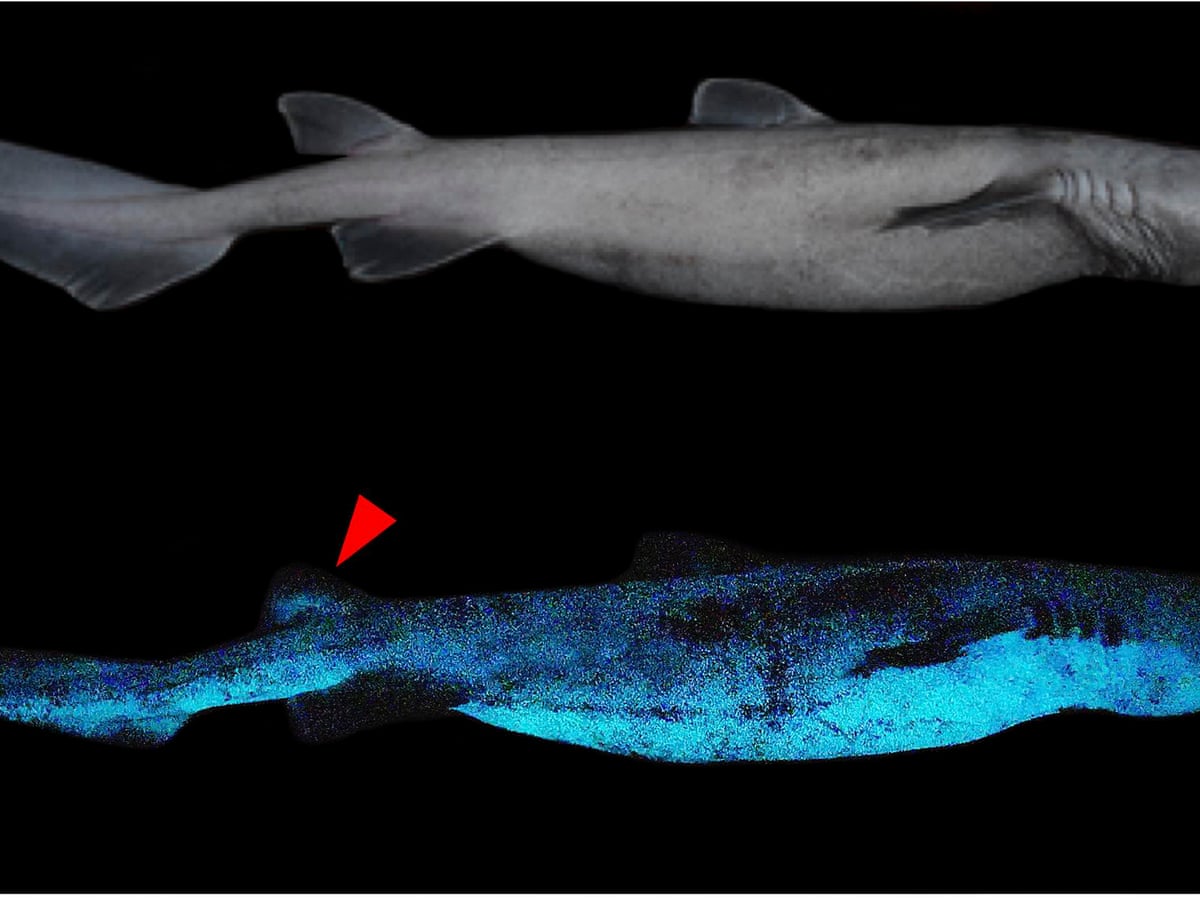Newly Discovered Bioluminescent Shark Sheds Light on the Ocean’s Hidden Ecosystems
In the vast and largely unexplored depths of the ocean, scientists have uncovered a remarkable new species that highlights just how little we truly know about life beneath the waves. Marine biologists have officially identified a rare and tiny species of shark, measuring only 14 centimeters in length, known as Mollisquama mississippiensis—or more colloquially, the American pocket shark.

This pocket-sized predator was discovered in the deep waters of the Gulf of Mexico, an ecosystem rich in biodiversity but still largely mysterious to modern science. What makes this newly identified shark especially fascinating is not just its size, but its unique biological features—most notably, a pair of bioluminescent gill glands that emit light.
Bioluminescence, the natural ability of organisms to produce light, is a survival mechanism frequently found in deep-sea creatures. In the case of Mollisquama mississippiensis, the light-producing glands are believed to play a role in hunting or communication in the pitch-black waters of its habitat. This adaptation may help it attract prey, evade predators, or even signal to other members of its species.
The discovery is significant not only for its novelty but for what it reveals about the unexplored frontiers of marine biology. The American pocket shark is only the second of its kind ever documented. The first, Mollisquama parini, was found nearly four decades ago in the southeastern Pacific Ocean. The two species, though similar in form, are geographically and genetically distinct—suggesting that there could be more relatives yet to be discovered in other parts of the ocean.
Researchers emphasize that the find is a reminder of how limited our knowledge of the deep sea remains. The National Oceanic and Atmospheric Administration (NOAA) estimates that over 91% of ocean species have not yet been formally identified. With each expedition, scientists uncover organisms that challenge existing classifications and reveal the extraordinary complexity of life in marine environments.
Despite their critical importance to the planet’s ecosystems and climate, deep-sea environments remain some of the least understood regions on Earth. The Gulf of Mexico, where this shark was discovered, is especially under-researched. From ancient coral reefs to hydrothermal vent systems, the area hosts a range of habitats that support unique biological communities—many of which are still undocumented.
The discovery of Mollisquama mississippiensis also raises broader questions about biodiversity conservation and environmental protection. As commercial fishing, deep-sea mining, and oil extraction expand into these fragile ecosystems, previously undiscovered species may be at risk before they’re even known to science.
Advanced technologies such as remote-operated vehicles (ROVs), submersibles, and high-resolution imaging are now allowing researchers to reach and study parts of the ocean once considered inaccessible. These innovations are accelerating the pace of discovery—but they also underscore the urgency of protecting these ecosystems before they’re irreparably altered.
Biologists continue to analyze the anatomy, behavior, and genetics of the pocket shark in hopes of learning more about its role in the underwater food web. Each new detail contributes to a growing understanding of how marine species have evolved to thrive in one of Earth’s most extreme environments.
While the ocean covers over 70% of our planet, it is still the final frontier in biological discovery. The appearance of a glowing, thumb-sized shark is a small but powerful reminder that the natural world is filled with wonders we have yet to encounter. And in the shadows of the deep sea, even the tiniest creature can illuminate vast new possibilities for science and discovery.
Source:
National Oceanic and Atmospheric Administration (NOAA), Marine Biology Research Institutions